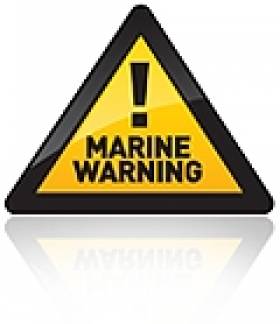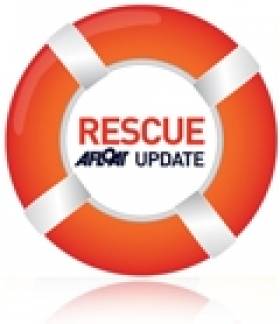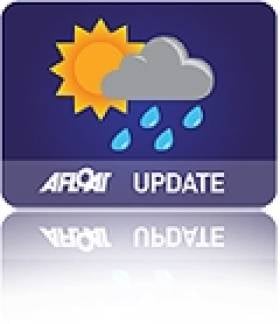Displaying items by tag: Small Craft Warning
#MARINE WARNING - A small craft weather warning is in effect today as strong easterly winds bring heavy rains sweeping across Ireland.
Met Éireann reports that strong gales between force 5 and 6 are developing this morning on all coasts and on the Irish Sea, with northerly gales set to develop on western and southern coasts this afternoon, and speeds in most places expected to reach force 8 or 9.
Winds may even reach storm force 10 between Roche's Point and Slyne Head by the end of the day.
In addition, Irish Coast Guard manager Declan Geoghegan told the Press Association that local flooding is likely throughout the country - especially in Connacht, which may experience up to 60mm of rainfall - and warned the public not to attempt crossing fast-running rivers or fords.
“The combination of tides, forecasted high winds in the coming days and swollen rivers may result in very dangerous conditions," he said.
The Irish Times has more on the story HERE.
Angler Dies After Lough Corrib Incident
#RESCUE - One angler has died in hospital and another was receiving emergency treatment last night after their boat got into difficulty on Lough Corrib.
According to The Irish Times, the two men were among a party of three on a boat that was struck by a wave off Annaghdown, which knocked one of them into the water.
Though he was reportedly wearing a lifejacket before he went overboard, an empty jacket was then spotted floating on the surface. One colleague entered the water to search for him but was unsuccessful.
Responding to the distress call from a nearby angling boat, the Irish Coast Guard's Shannon helicopter located the missing angler soon after arriving on scene, some 50 minutes after he entered the water.
The man was airlifted to University Hospital Galway, with the coastguard chopper returning for his colleague when he showed signs of hypothermia.
A small craft warning from Met Éireann was in effect throughout the area at the time of the incident.
The Irish Times has more on the story HERE.
Weather Warning for Irish Sea as Winter Winds Sweep In
#WEATHER - Met Éireann has issued a weather warning for the Irish Sea for the next 24 hours due to expected gale force westery winds.
A small craft warning has also been issued, with west to southwest winds continuing to reach force 6 tonight on the Irish coast from Carlingford Lough to Roches Point to Slyne Head.
The high winds marks the first wave of real winter weather after a milder-than-average November, the Evening Herald reports.
A forecaster told the paper that strong winds have "reached storm force on the Irish coasts from Belfast Lough to Wicklow Head to Mizen Head and on the Irish Sea.
"We expect that by tonight they will slightly drop but may still reach a strong gale force."































































